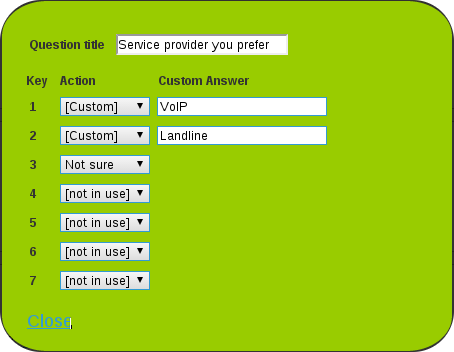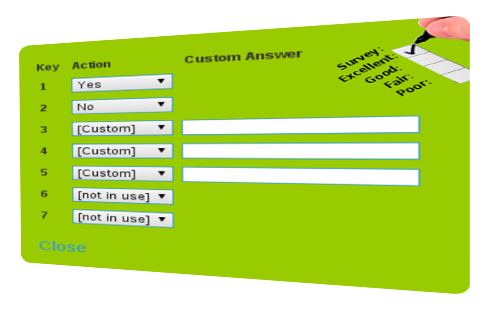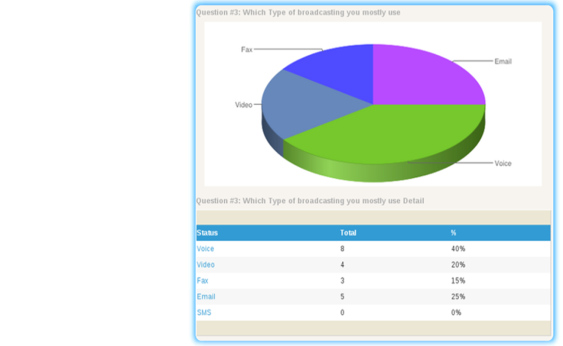Amidst a competitive business environment, customer experience plays a vital role in achieving success and retaining loyal customers. To meet evolving expectations, businesses seek feedback to enhance their offerings. Inbound phone surveys have emerged as a valuable tool for improving customer experience. By directly engaging customers, businesses gain insights, identify pain points, and make data-driven improvements. This article delves into the concept of inbound phone surveys and their significance in elevating the overall customer experience.
Section 1: Understanding Inbound Phone Surveys
1.1 What are Inbound Phone Surveys?
Inbound phone surveys are a client criticism collection strategy that includes starting phone calls to pick up important experiences into their encounters. Not at all like outbound surveys, where businesses contact clients, inbound phone studies are activated by clients themselves, regularly after connection with a item or benefit. This approach permits for gathering opportune criticism whereas the customer’s involvement is still striking in their memory, giving an opportunity to capture profitable experiences.
1.2 Benefits of Inbound Phone Surveys
Inbound phone surveys offer several benefits that contribute to enhancing the customer experience:
1.2.1 Personalized Interaction:
Inbound phone surveys empower personalized and direct communication with clients, fostering a sense of importance and making them feel esteemed. Unlike automated online overviews or emails, phone surveys offer a human touch, allowing clients to specific their thoughts and feelings more effectively. This individual interaction enhances the quality of criticism and gives businesses with deeper insights into client experiences and estimations.

Inbound Phone Surveys
1.2.2 Real-Time Feedback:
By reaching customers immediately after their interaction, businesses can capture real-time feedback, enabling them to address issues promptly and improve customer satisfaction. This immediacy enhances the accuracy and relevance of the feedback received.
1.2.3 Detailed Insights:
Incorporating phone conversations in surveys enables businesses to gather detailed and nuanced feedback, surpassing other survey methods and yielding valuable insights into customer preferences, pain points, and expectations. The interactive nature of phone surveys facilitates in-depth discussions, uncovering valuable insights that can guide informed business decisions. By delving more profound into client perspectives, businesses gain a comprehensive understanding of their target audience and can tailor their procedures to meet their needs effectively.
1.2.4 Higher Response Rates:
Inbound phone surveys regularly result in higher response rates compared to other overview methods, as customers are more likely to lock in in a conversation instead of respond to an email or online frame. This higher response rate ensures a more agent sample and permits businesses to gather a broader run of feedback.
Section 2: Implementing Inbound Phone Surveys
2.1 Designing Effective Survey Questions
The design of survey questions plays a pivotal role in gathering important and actionable input. When designing inbound phone surveys, consider the following variables:
2.1.1 Open-ended Questions:
Consolidating open-ended questions allows clients to provide point by point feedback, sharing their experiences and suggestions more freely. These questions energize clients to express their thoughts, permitting businesses to pick up deeper insights into their preferences, torment focuses, and ranges for improvement.

Implementing Inbound Phone Surveys
2.1.2 Rating Scales:
Including rating scales empowers businesses to measure client satisfaction and identify ranges for change based on client ratings. These scales give quantifiable data that can be analyzed and compared over different clients or time periods.
2.1.3 Demographic Questions:
Gathering demographic data helps businesses portion their customer feedback and tailor their items and services to specific target audiences. By understanding the demographics of clients who provide criticism, businesses can identify designs and make more informed choices regarding client preferences and needs.
2.2 Training and Empowering Survey Agents
The victory of inbound phone surveys relies on the abilities and abilities of the overview agents who lock in with customers. Training and enabling overview agents are basic steps in implementing effective phone surveys:
2.2.1 Effective Communication Skills:
Survey agents ought to be prepared in active listening, empathy, and viable communication to lock in customers in important conversations and extract valuable bits of knowledge. They should be able to explore conversations easily, ask follow-up questions, and make clients feel comfortable sharing their experiences.
2.2.2 Product and Service Knowledge:
Agents should have a comprehensive understanding of the products or services being studied, empowering them to address client inquiries and concerns more effectively. Knowledgeable agents can give exact data, resolve issues promptly, and improve the in general client experience.
2.3 Ensuring Data Privacy and Compliance
Keeping up client trust and ensuring their privacy is of utmost significance when conducting inbound phone surveys. To ensure information privacy and compliance, businesses should consider the following:
2.3.1 Data Protection:
Businesses must prioritize information security and guarantee that client information is dealt with securely and in compliance with relevant directions, such as GDPR or CCPA. Actualizing strong information security measures, such as encryption and secure capacity, makes a difference keep up client privacy and builds accept.
2.3.2 Consent and Opt-Out Options:
Customers should be informed about the purpose of the survey, their rights regarding data usage, and provided with the option to opt-out if they do not wish to participate. Obtaining explicit consent from customers before collecting their feedback ensures transparency and respects their privacy choices.
Section 3: Leveraging Inbound Phone Surveys for Enhanced Customer Experience:
3.1 Prompt Issue Resolution
By reaching out to customers through inbound phone surveys, businesses can promptly address any issues or concerns raised, demonstrating a commitment to customer satisfaction. Resolving problems in a timely manner not only enhances the customer experience but also prevents negative word-of-mouth and potential customer churn.
3.2 Product and Service Improvement
Inbound phone surveys give a riches of data and insights that can be utilized to identify regions for improvement in items and services. By understanding client pain focuses and inclinations, businesses can make data-driven choices, refine their offerings, and convey a more custom-made and satisfying client experience. The feedback gathered from phone overviews serves as a valuable asset for continuous improvement and innovation.

3.3 Personalized Customer Engagement
Engaging clients through inbound phone surveys allows businesses to personalize their interactions and appear genuine care for their clients. By effectively listening to their input and addressing their concerns, businesses can construct stronger connections, cultivate loyalty, and separate themselves from competitors. This personalized approach to client engagement helps make positive encounters and fosters long-term client relationships.
Conclusion:
Inbound phone surveys offer a effective tool for upgrading client experience by giving personalized and timely criticism. By implementing viable study strategies, training overview agents, and ensuring data security, businesses can use inbound phone studies to pick up profitable bits of knowledge, promptly address client issues, and improve their items and services. In an period where client satisfaction is vital, businesses that prioritize the client experience through inbound phone studies will stand out and thrive within the competitive market.
Leveraging Open Source in ICT